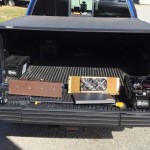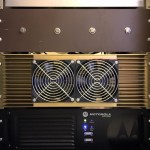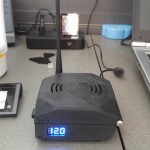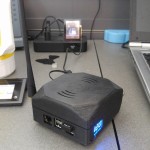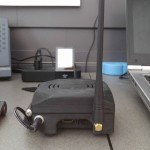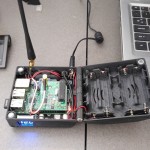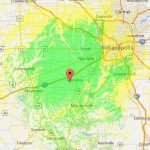�Well, there went October….
I continued my work with the various DSTAR Raspberry Pi images and have settled on the Maryland DSTAR Image as they are the only ones who support the dual-band DVMega board out of the box. While dual-band, the board shares it’s serial interface, so only one band is usable at a given time. There are some plans in place for a true dual-band board at some point, however. I seem to have resolved my lock up issues with my DSTAR Hotspot and the culprit was a bad Pi 2.
In the DMR world, I installed a Henry Amplifier on my main DMR machine in Indy along with a different set of duplexers. The difference was amazing. while the coverage area hasn’t increased that much, penetration has. Doing some research on a pre-amp based upon the recommendation of a fellow Ham in Tennessee. If this continues to work well, I will look to replicate these changes on my Monrovia machine.
Received a call from a fellow Ham asking for some help in programming his new Tytera MD-380. After sending him a code plug and answering some of his questions, he was off to the races.
Took a quick look at the SmartPTT DMR solution, not so much for it’s c-Bridge like capabilities, but for it’s dispatch console feature. I’m still gathering information at this point, but it looks like it might be possible to use the dispatch console and a PC with an audio device as a “DMR hot spot.” I didn’t get too deep into it, but hope to continue my experimentation in November.
Sent one of my Connect Systems CS700’s back for the upgrade to a CS750. I’m pretty happy with the results, especially the large number of contacts that the radio can hold as well the ease by which they can be imported. At this point, I’m planning to spend the $60 to upgrade my other CS700, which is currently loaned out.
Formalized my plans to attend the Ft. Wayne Ham Fest. I’m looking forward to that as it’s been a good time. Unsure at this point if we’ll have a table or not.
Made a few changes to a c-Bridge manager at the request of the trustee and began building out a new manager for an existing trustee. Slowly but surely hammering out the latter while balance work and life.
Added a control talk group for the Hytera Nationwide reflector to my Indy machine. They seem to be making improvements in that slowly but surely. I think it’s pretty cool toy see Hams finding ways to bring dissimilar technologies together.
One of my long time projects finally saw the light to day this past month. I’ve been wanting to build an APRS IGate/Digirepeater for quite some time now. I stumbled across an update notice to the Dire Wolf linux package and that got the creative juices flowing. Initially I had some trouble with the audio interface and since I was bringing several different pieces of puzzle together, I needed to establish a baseline. To that end, I pulled my audio interface and replaced it with one of my SignaLink boxes. That was what I needed to finalize the Pi 2 configuration and it’s currently running on my bench connected to a dummy load. Given my proximity to several high-profile Digis, I will likely cut it back to IGate only functionality down the road, but it’s been a learning experience and a lot of fun. Now that I have it running and know that the Pi 2 config is good, I can start working with the other components to get them figured out.
Until next month…. Let’s remember our Veterans on November 11th and may you and yours have a blessed Thanksgiving Holiday.
—
73,
Bill Atkinson, NF9K
ARRL Technical Specialist
ARRL VE/OO
Laurel VE
PODXS 070 Club #1595
30MDG #6014
www.nf9k.net
www.crossroadsdmr.org�

